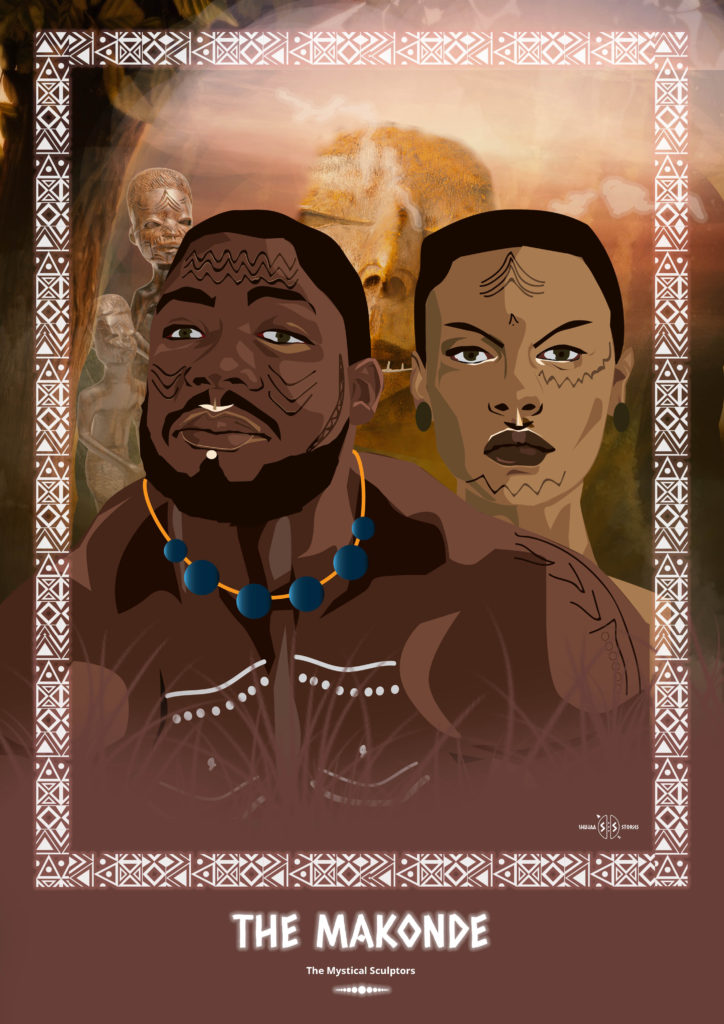The Makonde – The Mystical Sculptors

Graphics by Tatu Creatives

Graphics by Tatu Creatives
African artistry has never been questioned. Creativity has been part of the continent for centuries and one of the leading communities in this department has for a long time been The Makonde of Eastern and Southern Africa, specifically in Mozambique, in Tanzania, and in Kenya; however, they are originally from the areas that are now the first two of the three African states.
Legend has it that The Makonde were always on the move, restless, but with glints of determination in their eyes. What they were looking for seems to have been inspiration. While some communities practiced farming, others were hunters, and The Makonde possessed prowess in working with wood. They were sculptors with the unending desire to collect chunks of wood and transform them into elaborate masks and figurines that were significant in their community. But these unique crafts could also be traded far and wide and it is no wonder that they were always on the move. As mentioned, they were originally from southern Africa (the location that is now the Mueda Plateau in Mozambique) and in their endless search for ingenuity, some Makonde folk travelled as far as the shoreline of the great mass of body, the Indian Ocean. Here, some Makonde settled in the late 1800s.
The Makonde sculptures varied, but most were of females, portraying concepts that represented birth and the Makonde people’s survival. Because of their matrilineal society, the sculptures and masks they carved were either heads and faces of women alone, or full body figurines with breasts and stomachs engraved with lizards that were believed to increase fertility in women. The attention to detail was particularly on the faces which were a replica of how The Makonde looked in real life. The Makonde stood out from other people because of their facial tattoos that seemed to dramatize their facial expressions. The tattoos were specifically marked on their foreheads, their cheeks and above their mouths. This made them striking and unique.
Aside from the female figurines, there were masks such as the Mapiko mask that symbolised ancestral spirits during the initiation of boys that were kept in Makonde temples. There were masks that were worn by dancers during certain communal ceremonies and masquerades to hide the dancer’s identity and embody the ancestral spirits of the deceased referred to as Lihoka. There were also sacred, spiritual masks used in worship and to summon spirits for protection through various phases and trials in life.
Their creativity didn’t lack humour; the Makonde artists also made sculptures of their enemies, but in comparison to themselves, the figurines of their enemies were grotesque with distortions and ridiculous features.
Even today, the Makonde artisans still exist. While their art has evolved over time, it still exists nonetheless. They create art that educates and creates awareness on important issues in life, and teaches children on the virtues and values of daily life.



